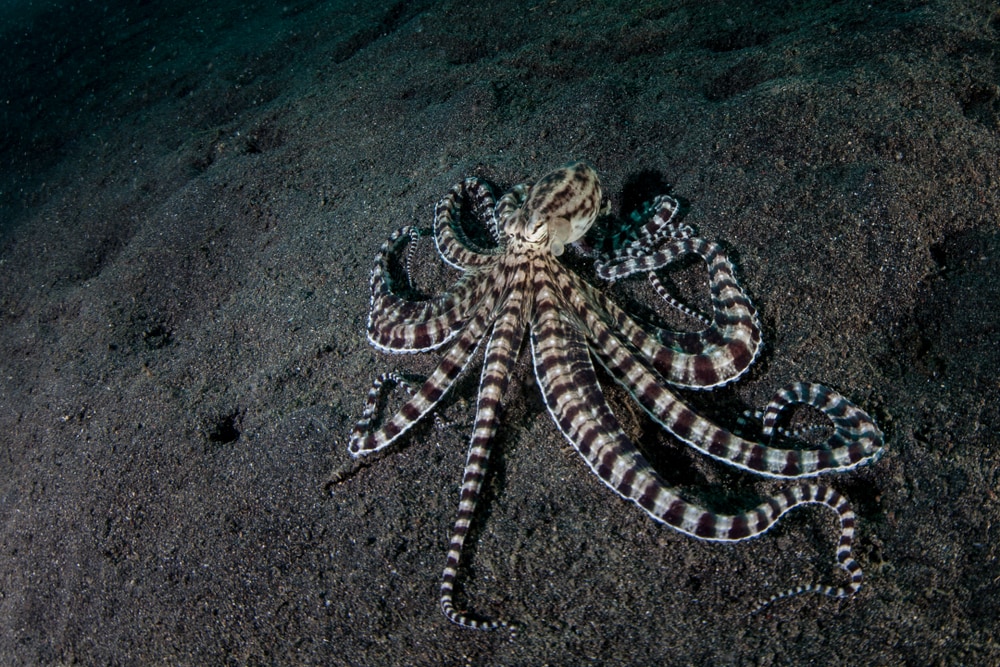Outforia Quicktake: Key Takeaways
- Mimic octopuses (Thaumoctopus mimicus) can mimic colors, textures, and behaviors of at least 15 other animals, making them highly intelligent and unique creatures.
- They are primarily found in the Indo-Pacific region in shallow waters with sandy or silty bottoms.
- Mimic octopuses use specialized cells called “chromatophores” to change their color and texture, helping them blend in with their environment or imitate other animals.
- These octopuses have a short lifespan of 1-2 years and face threats from predators like the golden trevally, as well as humans who want to keep them in aquariums.
- The mimic octopus plays an important ecological role as a predator and is known for its appearance in Disney’s “Finding Dory” as the character Hank.
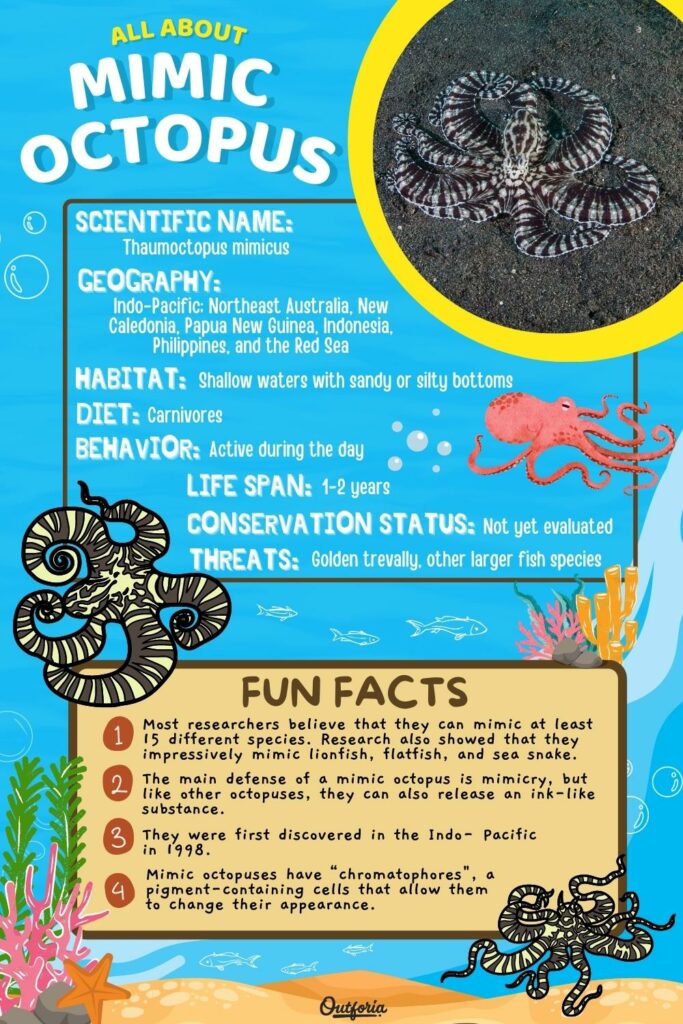
SHARE THIS IMAGE ON YOUR SITE
<a href="https://outforia.com/MIMIC-OCTOPUS/"><img style="width:100%;" src="https://outforia.com/wp-content/uploads/2022/12/mimic-octopus-infographics-1222-683x1024.jpg"></a><br> MIMIC OCTOPUS <a href="https://outforia.com">Outforia</a>If you go diving in Indo-Pacific waters and see a lionfish come across your path, it might not be a lionfish at all. It might actually be the mimic octopus.
Mimic octopuses are highly intelligent, charismatic creatures. They can mimic the colors, textures, and behaviors of at least 15 other animals. No other animal in the world can do that.
There are over 300 types of octopuses. While most octopus species hide away all day, the mimic octopus can hide right in plain sight.
What Do We Call Them?
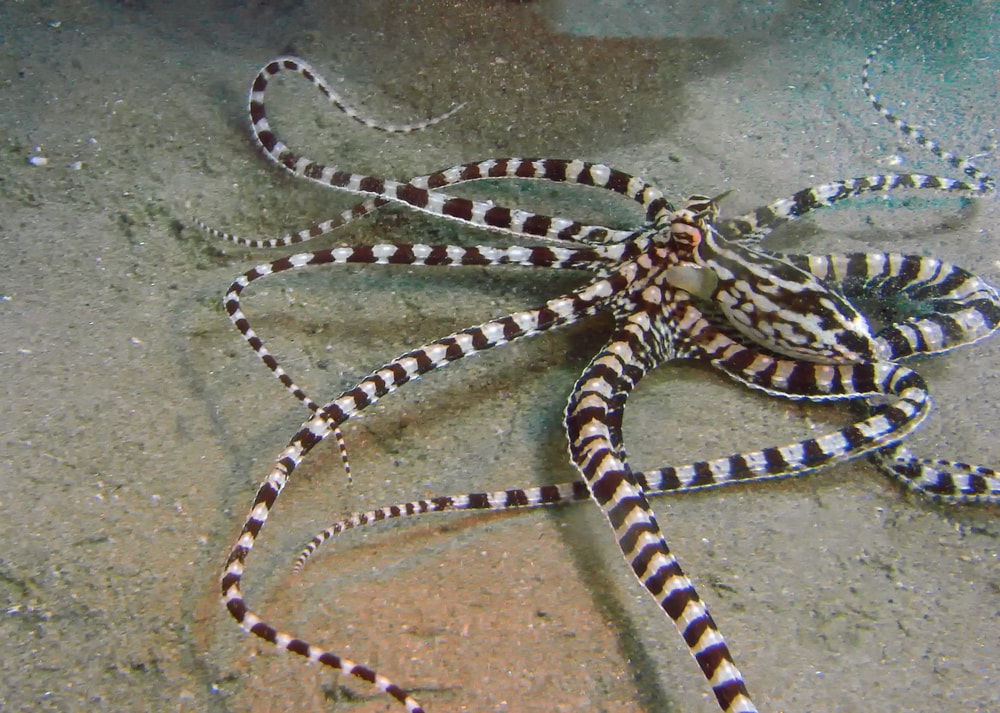
The mimic octopus, Thaumoctopus mimicus, is the only octopus in its genus. Although the species was discovered in 1998, it wasn’t named until 2005. Their name, of course, comes from their ability to mimic other animals.
What Do They Look Like?
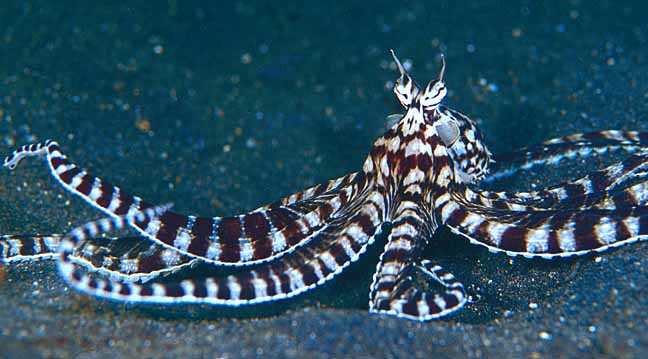
Mimic octopuses are small animals that only grow to about 2ft (0.6m) in length. Their mantle length is small, reaching just 2in (58mm). So, the arms can be 7-10 times the length of their mantle.
When they aren’t trying to mimic another animal, their arms are a pale to dark brown coloration. Many have a series of brown and white stripes going down the length of their body and limbs. Others may have more mottling to their coloration rather than striping.
Likewise, their mantle is typically brown with irregular white markings. But, you will also notice a teardrop-shaped ring on the middle or anterior of their dorsal mantle. They also have a “U” shape on their dorsal mantle.
Their skin is generally very smooth. But, they do have small bumps called “papillae” around the rim of the mantle. Each eye also has long, sharp papillae overtop of it for protection.
They have 283 suckers down the length of their arms.
How & Why Do Mimic Octopuses Change Color?
Mimic octopuses choose to change their color in this way because it keeps them safe. They can change their color to blend in with their surrounding environment. Or, they can change to mimic other animals that are more intimidating.
Mimic octopuses use specialized cells called “chromatophores” to change color. They can even change the texture of their skin to blend in more.
The mimic octopus can also mimic the movements of the animal it’s copying using its arms. They can deceive potential predators into thinking they’re not worth the attack.
What Are Chromatophores?
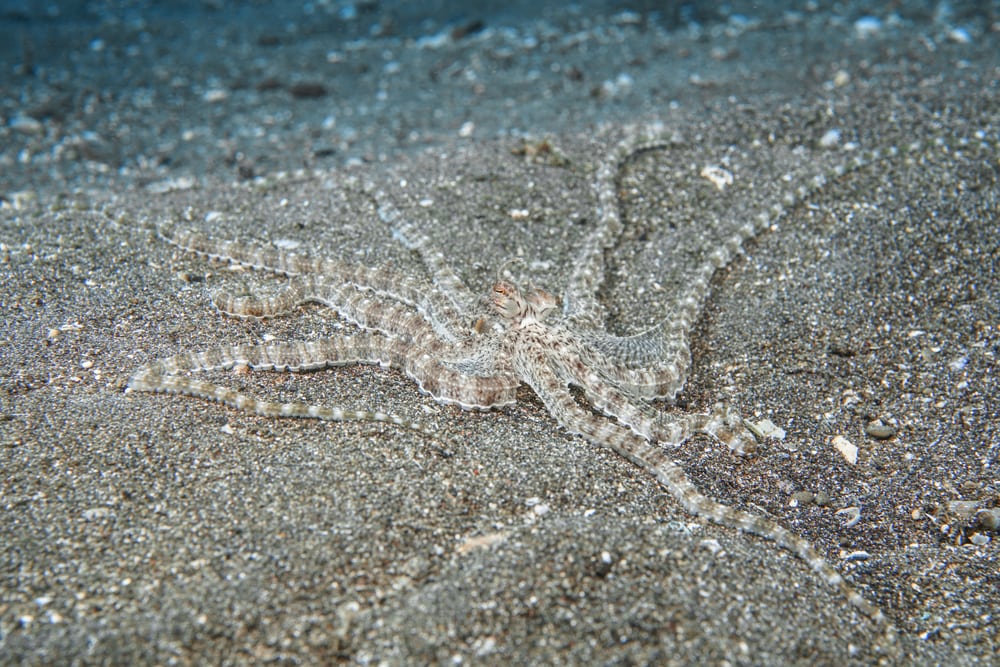
Mimic octopuses have “chromatophores,” pigment-containing cells that allow them to change their appearance. These cells live in the deeper layers of the skin. Their distribution in the body determines the pattern that an animal’s skin will have.
Many animals have chromatophores and the ability to change their color. But, the mimic octopus seems much more adept at this skill.
The chromatophores allow the mimic octopus to change color by constricting. The cells constrict rapidly, allowing the animal to instantly change its appearance.
Which Animals Can It Mimic?
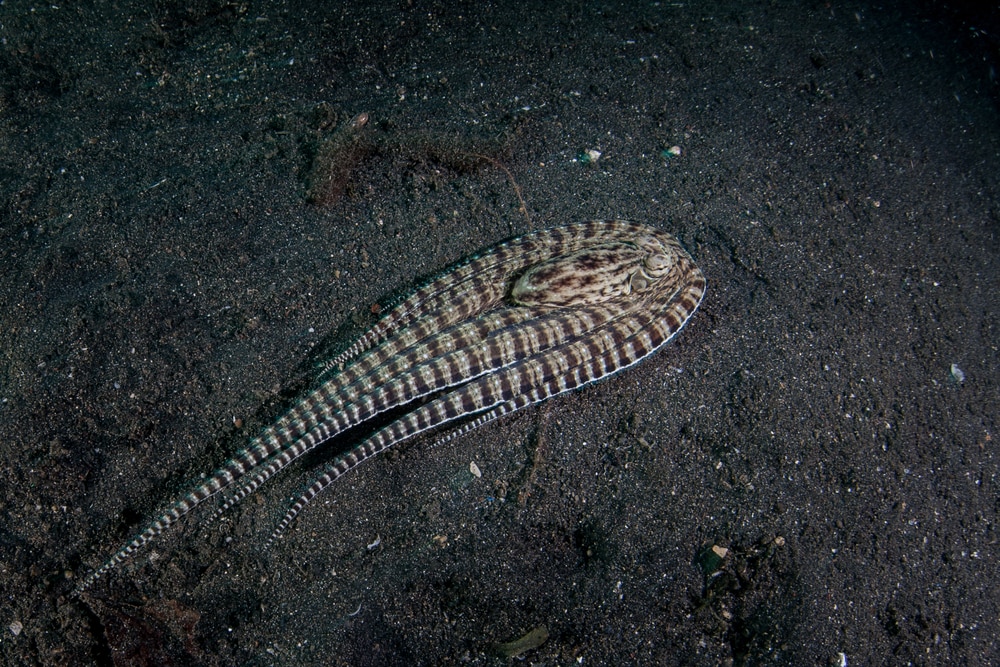
Most animals who can mimic can only copy one species. Research confirms the mimic octopus can copy an impressive 3 different species.
Still, divers say that they’ve seen mimic octopuses imitating many other species as well. Most researchers believe that they can mimic at least 15 different species. Some of the species that divers claim they’ve seen them imitate include:
- Anemones
- Stingrays
- Crocodile snake eels
- Nudibranchs
- Sponges
- Tube worms
- Colonial tunicates
- Jellyfish
- Feather stars
- Giant crabs
- Mantis shrimp
- Seahorses
Mimic octopuses can choose which predator to imitate based on which predator is in the area. For example, if it sees a damselfish, it will most often “transform” into a sea snake. Sea snakes are a major predator of the damselfish, so this strategy is quite effective.
Mimic octopuses can copy lionfish, sole (flatfish), and sea snakes.
Lionfish
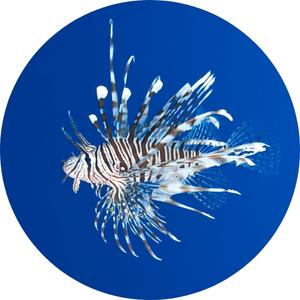
It copies the lionfish by spreading out its arms to mimic the dangerous spines of the fish. On a real lionfish, these spines are sharp and venomous. So, most predators stay away from them.
The mimic octopus’s coloration already resembles the lionfish’s brown and white striping. So, they don’t have to change much of their color.
They also propel themselves through the water. This makes them appear to be swimming through the water column as the lionfish does.
Sole (Flatfish)
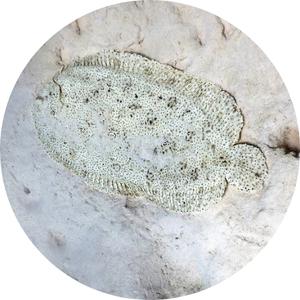
Soles are poisonous fish, so it’s no wonder the mimic octopus likes to copy them.
The sole is a flat, leaf-shaped fish that glides across the ocean floor. The mimic octopus can copy this behavior. It will pull its arms against its body, allowing its body to flatten out.
Sea Snake
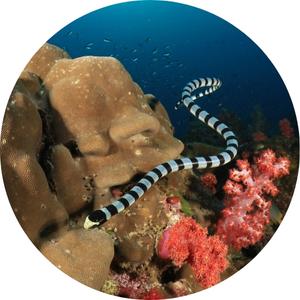
Some sea snakes are venomous, so it’s also helpful for mimic octopuses to copy them.
When they have a burrow at their disposal, the octopus will pull its body inside the burrow. They will then place two arms against the sand outside the burrow. The black and white striping of their arms mimics a sea snake to deter predators.
Anemones
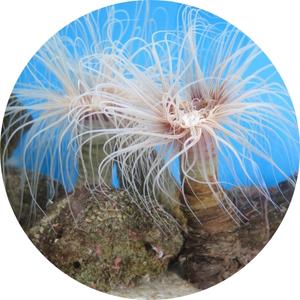
Researchers think the mimic octopus may mimic large sand anemones that can sting. The octopus will sit on top of sand found with its arms raised above its head in all different directions.
Crabs
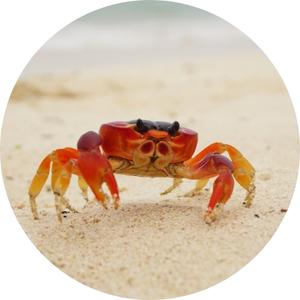
Researchers have even noticed mimic octopuses copying the mating behaviors of crabs. They do this to lure over a “potential mate.” When the crab gets close enough, the octopuses will snatch them up and make a meal out of them.
Where Can We Find Them?

The mimic octopus was discovered in 1998 in the Indo-Pacific. They live in the southwestern Pacific Ocean, where the waters are tropical.
They live in northeast Australia near Lizard Island. From there, they can be found across New Caledonia and Papua New Guinea. Their range further extends through Indonesia. Then, northward into the Philippines and westward to the Red Sea.
Where Do They Live?
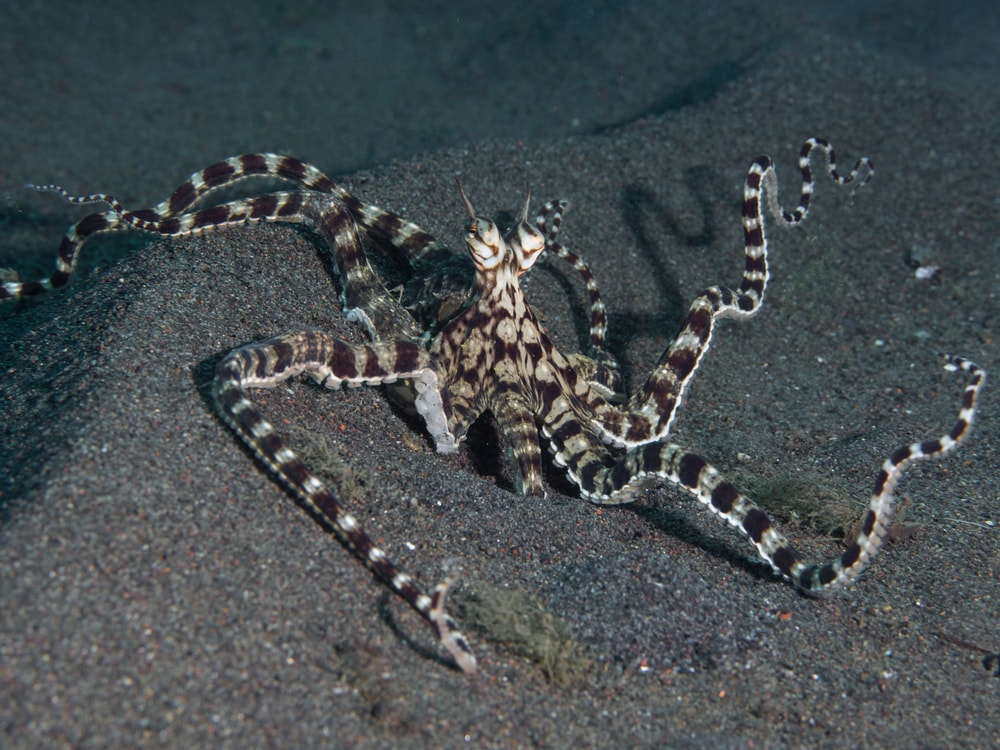
They prefer shallow waters with sandy or silty bottoms. They live at depths of about 1.5ft (0.5m) to about 121ft (37m). This usually includes habitats at the mouths of rivers and estuaries.
Most octopuses prefer reef habitats where there is plenty of spots to hide. The habitat of the mimic octopus leaves them exposed with few hiding spots. This is likely why they have developed their mimicking ability. It allows them to stay safe in an environment where it’s difficult to hide.
They are also excellent diggers and will build their own burrows inside the sand. If they don’t feel like making their own burrow, they may steal a burrow from fish, crabs, or worms.
What Do Mimic Octopus Eat?
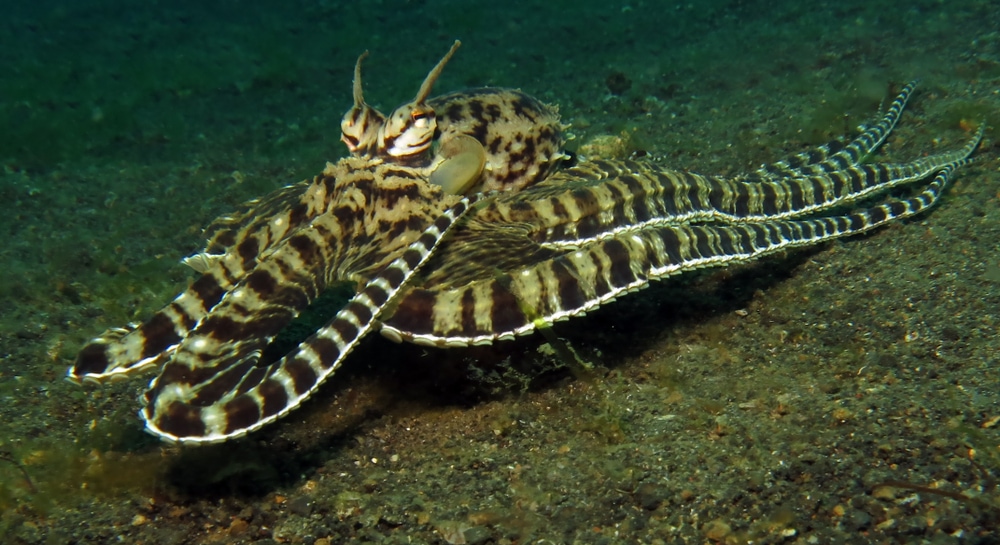
Mimic octopuses are carnivores who will eat just about anything they can catch. Their favorite foods include worms, fish, crustaceans, and echinoderms.
Because they are a benthic species, they will hunt for their prey along the sand. They are not afraid to stick their long arms into burrows to snatch out their next meal. After sticking their arm down the hole, they flare their web to trap the prey.
They are also known for hunting through entire tunnels. Researchers have seen them enter through one hole and come out another with prey in tow.
You may also like: 15 Different Types Of Jellyfish You Need To Know: Chart And Pictures
What Do Their Lives Look Like?
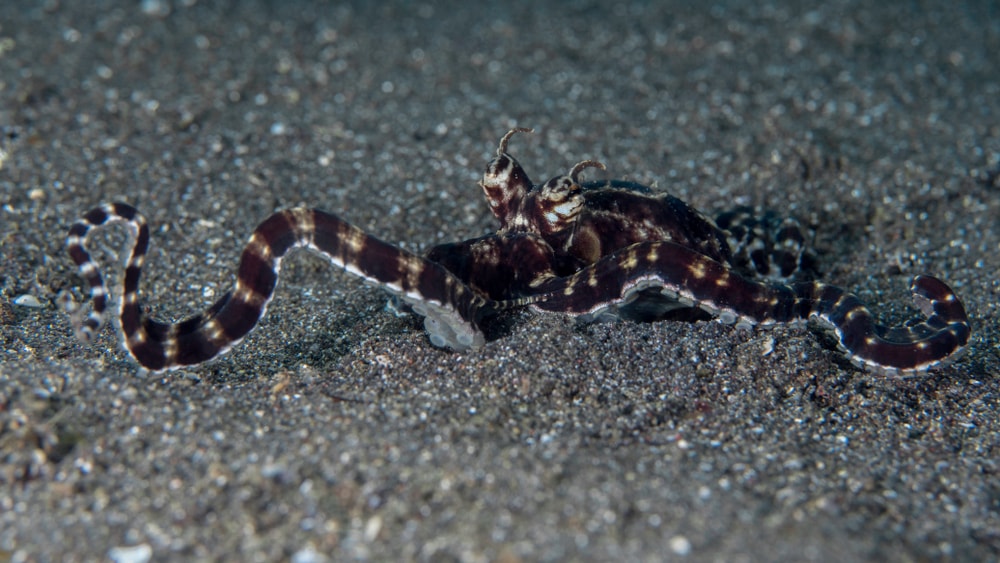
Remember how the mimic octopus can hide inside a burrow to mimic a sea snake? Well, that’s because they’re excellent diggers and burrowers! They can even dig their own burrows and even traverse through underground tunnels. They’re not even scared to stick their arms inside random holes to look for food.
Most octopuses are nocturnal. The cover of night allows them to better hide from predators. But, because the mimic octopus is a master of disguise, it can safely be active throughout the day.
But how do they stay safe when they need to rest? Easy! They take advantage of the sandy substrate.
At night, they’ll simply hide in their burrows when they need to rest. During the day, they’ll bury their entire body in the sand with just their eyes poking out. This allows them to keep an eye on what’s going on while they take some rest.
You may also like: Nocturnal Animals List: What Stays Awake At Night?
How Do Mimic Octopus Reproduce?
Like all male octopuses, the male mimic octopus has a “hectocotylus” that it uses to mate. A hectocotylus is a specialized arm. They use it to transfer a small packet of sperm called “spermatophore.”
Males may place their hectocotylus into the female’s mantle. They will transfer the sperm directly. Other times, the male may simply hand his spermatophore over to the female. She will keep it safe until she is ready to use it.
Also, like other octopuses, the male’s hectocotylus will fall off after mating. He will usually live for a few months after mating and then die.
Similarly, the females die shortly after laying their eggs. They will brood over their eggs for some time, keeping them safe from predators. Shortly before the eggs hatch, the female’s health will go drastically downhill until she dies.
After they hatch, juvenile octopuses live in “planktonic clouds.” These clouds form near the surface of the ocean.
They spend all their energy eating to grow bigger as quickly as possible. The smaller they are, the more chance these octopuses have of becoming a meal. Ultimately, only 1-2% of octopuses make it to adulthood.
How Long do Mimic Octopus Live?
Like most octopuses, the mimic octopus doesn’t live very long. Their average lifespan is 1-2 years.
You may also like: How Long Do Octopus Live? All About Their Unusual Life Cycle
Conservation Status & Population
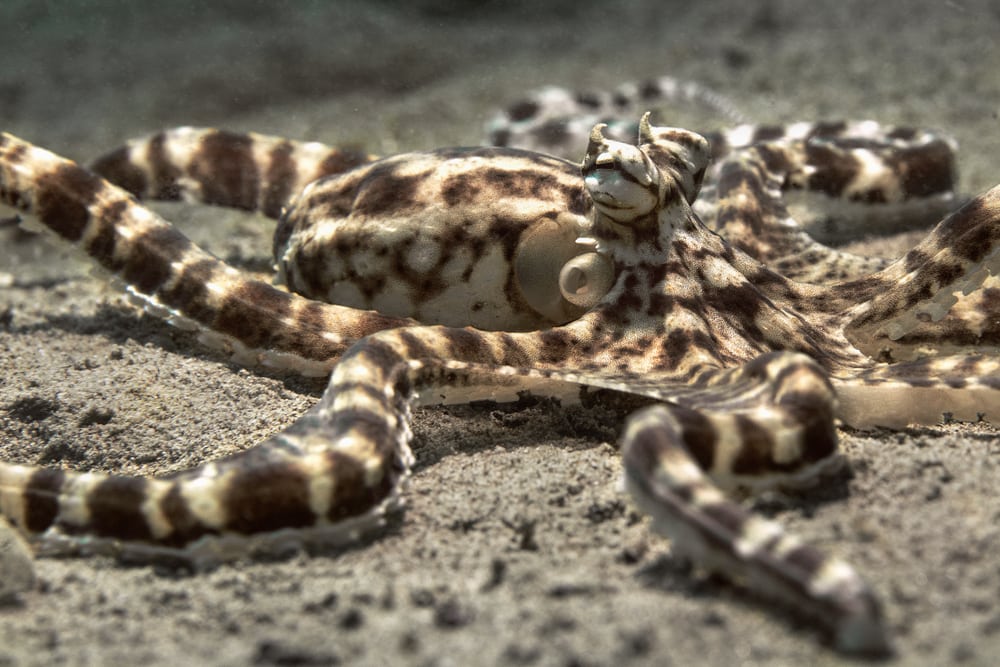
The International Union for the Conservation of Nature has not evaluated the mimic octopus. So, its current population trend is unknown.
Threats and Predators
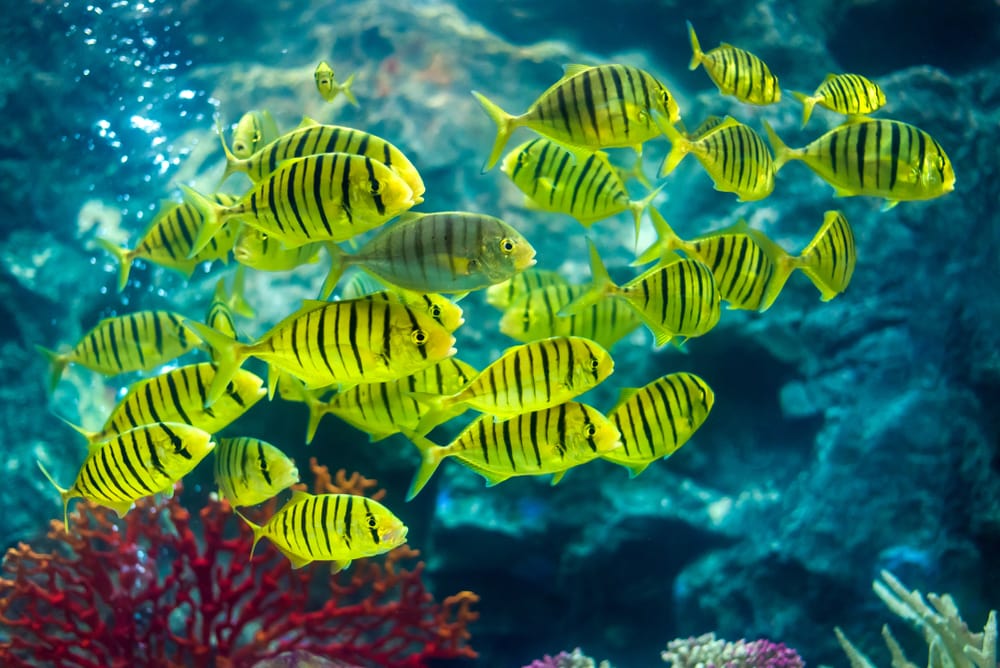
The main predator of the mimic octopus is the golden trevally. But, they are threatened by other large species of fish as well.
The main defense a mimic octopus has against predators is its mimicry. Sometimes, the mimicry isn’t enough to actually fool the predator. But, it can be enough to startle and distract the predator until the octopus can get away.
Like other octopuses, the mimic octopus can also release an ink-like substance. This substance can distract predators while the octopus gets away.
Human Threats
Mimic octopuses are not a type of octopus that is typically eaten. But, they are still threatened by humans. People are so intrigued by mimic octopuses that they want to keep them in their aquariums.
The demand for trade of these animals is increasing. This may become dangerous to their populations. We’re not sure about their population numbers, but there likely aren’t many of these octopuses. Sightings are rare and difficult to find, even for research purposes.
You may also like: 19+ Different Types of Eels: Classification, Facts, & Photos
Ecological Role
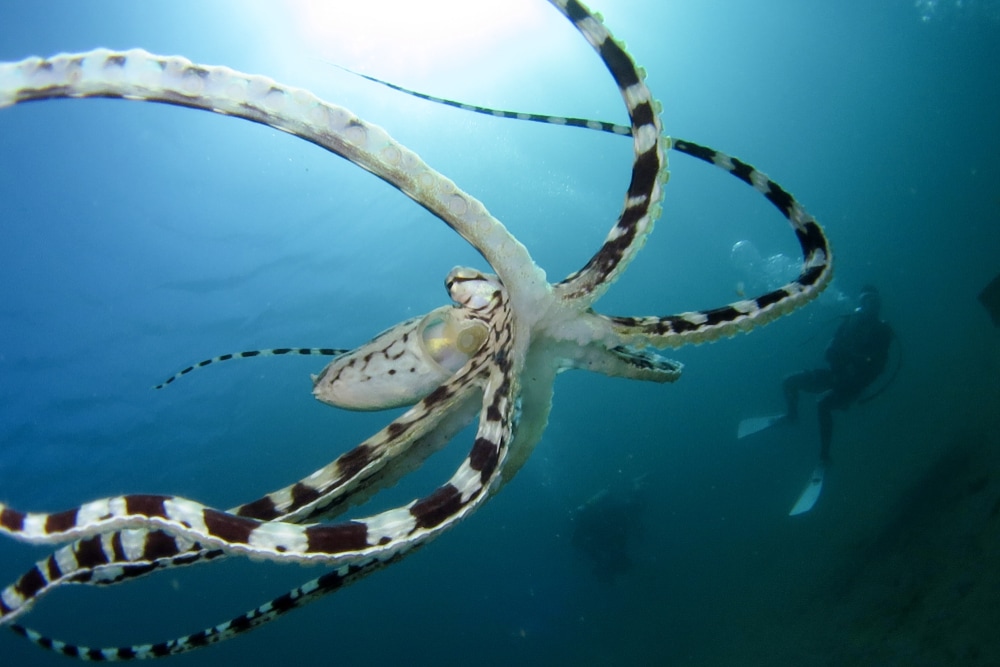
The mimic octopus plays an important ecological role as a predator. They are masters of disguise, which prevents them from becoming prey themselves. But, they prey on small species of animals that help keep populations under control.
You may also like: 22 Incredible Types of Coral (Plus Photos, Fun Facts & More)
Mimic Octopus in Popular Media — Hank the Octopus
The mimic octopus made an important appearance in Disney’s “Finding Dory.” The octopus’s name was Hank, voiced by Ed O’Neill, who played a pivotal role in the movie.
Like the complex mimic octopus itself, Hank’s character was difficult to bring to life. Supervising Technical Director John Halstead said it took almost three years to perfect Hank. This was due to the octopus’s lack of a skeleton and extreme flexibility.
However, Hank’s character is a bit different than a real mimic octopus. Real-life mimic octopuses have brown and black stripping all down their bodies. Hank is a solid orangish-red color.
Hank’s arms are also much shorter than a real mimic octopus. Mimic octopuses have small mantles with arms that are 7-10 times the length of their body.
Hank’s mantle is very large, and his arms are quite short. Jason Deamer, the character art director, even stated that the length of Hank’s arms was cut in half for better animation.
Another way that Hank differs from the real thing is with his mouth. It’s hard to create an animated character without a visible mouth.
An octopus’s mouth is on the underside of the body, so Hank would seem to be missing a mouth. They kept the mouth out of most of the frames, but the animators chose to give Hank a mouth on the front side of his body.
In other ways, though, Hank is quite similar to the real mimic octopus. He uses his color-changing and shape-shifting abilities to help Dory in her mission. He’s also incredibly intelligent, like the real animal. He masterfully escapes his enclosure and even drives a truck.
Mimic Octopus FAQs
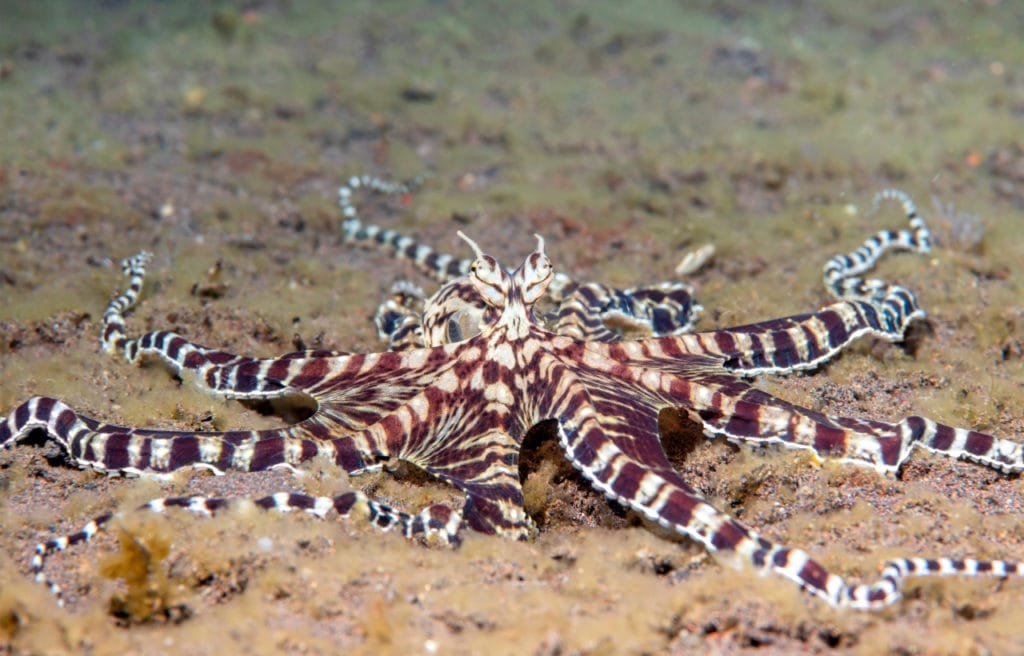
How many brains does a mimic octopus have?
Each of an octopus’s eight arms contains what researchers call a “mini brain.” This “brain” allows the octopus to independently control each of its arms.
But, they also have a centralized brain that exhibits top-down control. It’s more difficult for octopuses to control their arms with their centralized brain. But, it is possible.
How many hearts does a mimic octopus have?
Just as an octopus has many brains, it also has multiple hearts. An octopus has three hearts, each having its own job. One of their hearts pumps blood through the body’s organs. The other two hearts pump blood through the gills so that the octopus can get oxygen.
Is the mimic octopus edible?
Although the mimic octopus is probably edible, nobody seems to eat it. The most frequently eaten octopus is the common octopus, Octopus vulgaris.
Can octopuses mimic humans?
There isn’t any research that shows whether mimic octopuses can mimic humans or not. In all likelihood, the answer is probably “no.”
Do octopuses make good pets?
Although you can keep octopuses as pets, it’s not generally recommended. Only those with a lot of aquarium-keeping experience should attempt it.
More from Outforia
Check out this other amazing and intelligent octopus species!



